With more and more divers going bubble-free, the need to improve safety and performance has never been greater. Jason Brown joined 300 of the world’s top dive industry experts and leaders in Malta for Rebreather Forum 4.
Photographs by Jason Brown
For two weeks in April, the small Mediterranean island of Malta played host to possibly the most significant gathering of technical, military and scientific divers, leading academics and rebreather manufacturers seen in a decade. Their purpose was clear – to share and discuss all the latest research and scientific thinking around rebreather diving safety and performance, with a view to shaping the direction and attitudes of the industry through their findings.
Organised in conjunction with DAN Europe and PADI, Rebreather Forum 4 is an event like no other. It’s not generally open to the diving public – diving professionals need only apply – and previous Forums have occurred only once every ten years or so (although plans are afoot to increase the frequency of future events).
Event Format and Consensus Discussions
The format of the event would be largely unfamiliar to most divers too – after three days of presentations on a diverse range of rebreather-related topics delivered by leading academics and thought-leaders from across the globe, attendees were invited to discuss and debate a series of ‘consensus’ statements. Formed from key findings taken from the presentations by a panel of academics, these statements are designed to guide the industry forward with a view to making rebreather diving safer for us all.
Diving Exploration Opportunities in Malta

While the presentations held at the University of Malta’s Valletta Campus formed the core of the event, there were plenty of other rebreather-related activities to keep those in attendance occupied. Often described as the ‘Chuuk Lagoon of the Mediterranean’, no visit to Malta would be complete without diving some of its world-famous wrecks.
For the weeks either side of the main symposium, Malta’s many dive boats were filled with more rebreathers than the island had ever seen! In conjunction with Heritage Malta, attendees dived some of Malta’s best-loved deep wrecks – Le Polynesian, HMS Southwold, Schnellboot S-31 and more.
Discovery and Testing of New Rebreather Models
Attendees were offered the opportunity to discover some of the latest rebreather models too at a series of try-dive days held at the nearby Tal-Qroqq National Pool Complex. The 5m deep Olympic-sized pool saw CCR units from rEvo, iQSub, Lungfish, Fathom and DiveSoft all put through their paces under the watchful eyes of an experienced team of unit-specific instructors. Sidemount rebreathers proved to be a particular draw, with units from iQSub and Divesoft attracting attention from divers more used to traditional backmount units.
Day One Symposium: Speaker Presentations and Topics
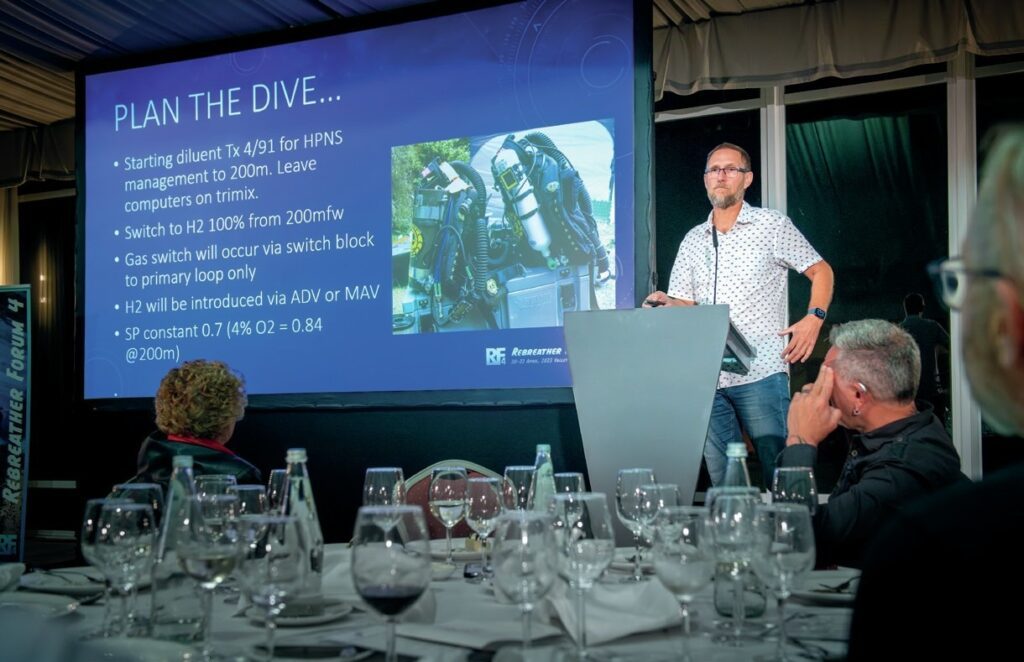
Day one of the symposium saw notable speakers take to the stage to deliver presentations on a broad range of rebreather-related topics. After a welcome address from organiser Michael Menduno and PADI President and CEO Drew Richardson, Hyperbaric and Diving Medicine expert Dr Neal Pollock started the ball rolling with a sobering look at the hazards of rebreather diving.
Pollock’s talk focused on the gaps in knowledge, best practice and equipment. Many of the shortcomings highlighted by Pollock were reinforced by DAN’s Research Director Dr Frauke Tillmanns, who revealed the results of extensive research into the current state of the rebreather market.
Bail out rebreathers are a hot topic among diving explorers and Andy Pitkin’s presentation on their use in long-range cave exploration generated much discussion. With their adoption on the rise, his talk highlighted the need to develop and document practices covering their safe use.
Mouthpiece retaining straps caused much discussion too, with heated debate on the pros and cons of their use. While a clear consensus wasn’t reached, those in attendance recognised their use as a strategy for avoiding loss of the mouthpiece and minimisation of water aspiration in the event of loss of consciousness underwater.
Advances in CO2 monitoring and the design of rebreather scrubbers came under the spotlight, with presentations from popular diving physician Professor Simon Mitchell and Dr John R Clarke – one of the foremost experts in scrubber technology and science. Clarke’s presentation focused on factors affecting scrubber efficacy, including unexpected variations in grain size, cold water and the diver’s own CO2 production rate.
Mitchell, on the other hand, highlighted developments in CO2 monitoring and the mechanics of CO2 exchange in the body. Mitchell’s thought-provoking talk highlighted the need for the development of capnography and accurate end-tidal CO2 monitoring within rebreathers.
Decompression guru Dr David Doolette gave a muchanticipated update on advances in decompression modelling. Doolette focused on four key areas of research – biomonitoring venous gas emboli (VGE) and heart rate variability (HRV) in decompression planning, inner ear decompression sickness (IEDCS), and alternative decompression planning strategies for deep technical dives. Although still in its infancy, Doolette’s research offered a promising glimpse at future decompression modelling.
The State of Rebreather Diver Training Today
Three of the biggest names in rebreather training took to the stage to reveal the state of rebreather diver training today. Paul Toomer (RAID), Mark Caney (PADI) and Sean Harrison (TDI) covered a number of key areas of interest – notably the steps being taken towards ISO standardisation of rebreather training and certification, and the need for closer relationships between the main training agencies and rebreather manufacturers. In addition, Sean Harrison provided a detailed analysis of global training activity over the last five years.
As well as identifying knowledge gaps that needed addressing, the Forum recommended training agency initiatives to promote continuing education, training refresher and/or recertification options where appropriate.
Emerging Technologies and Military Diving
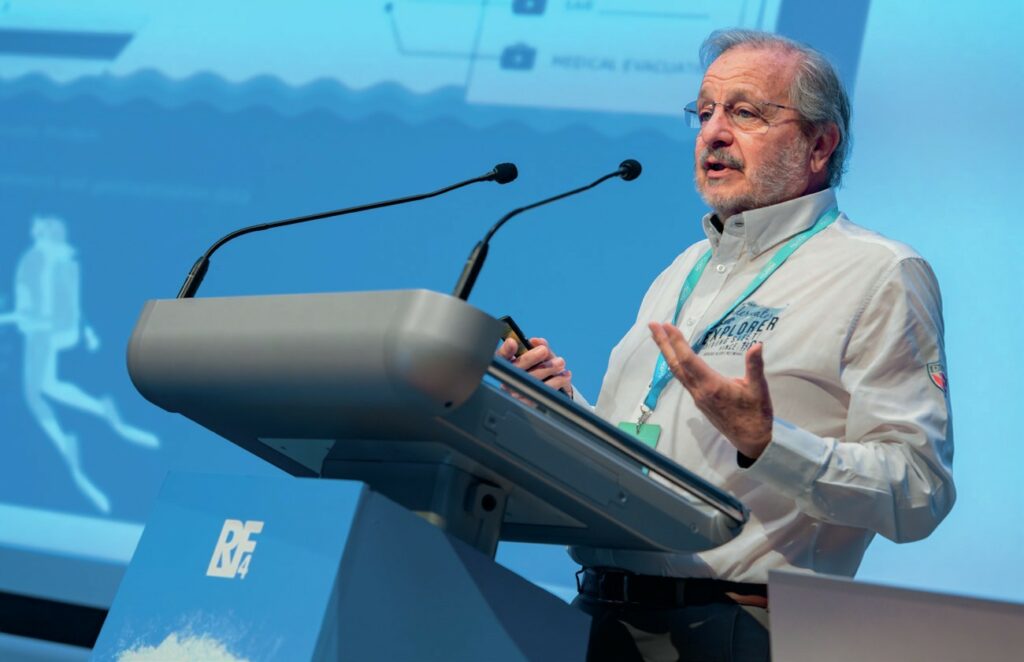
Military diving broke cover with presentations from Vince Ferris of the US Navy’s Experimental Diving Unit in Florida, and Oskar Frånberg, formerly of the Swedish Navy. Both speakers focused on the rebreather equipment and procedures that military divers use to conduct operations in combat situations.
Advancements in Real-time Diver Monitoring Systems
Talking of exciting new technologies, DAN Europe founder Professor Alessandro Marroni delivered a fascinating preview of the DANA Health project – a real-time diver-monitoring system that uses wearable underwater biometric sensors, an ultrasound device that transmits sensor readings to the surface and technology to forwards this data from remote diving locations to DAN’s team of scientists. Designed to monitor expedition divers operating in remote locations, the system promises to monitor health and decompression risk underwater and provide guidance should they run into problems.
The Highlight of Rebreather Forum 4: Keynote Address
For many, the highlight of Rebreather Forum 4 came on the final evening when all in attendance gathered for a celebratory banquet at the Xara Lodge in Rabat. After a short introduction from GUE President Jarrod Jablonski, Dr Richard ‘Harry’ Harris took to the stage to deliver the event’s keynote address.
Best known as the Australian anaesthetist and cave explorer who played a crucial role in the Tham Luang cave rescue in Thailand back in 2018, Harris and the Wetmules team attempted a 230m deep cave dive at the Pearse Resurgence in New Zealand using hydrogen as a diluent gas – something that has never been done before.
Experimenting with Hydrogen as a Breathing Gas
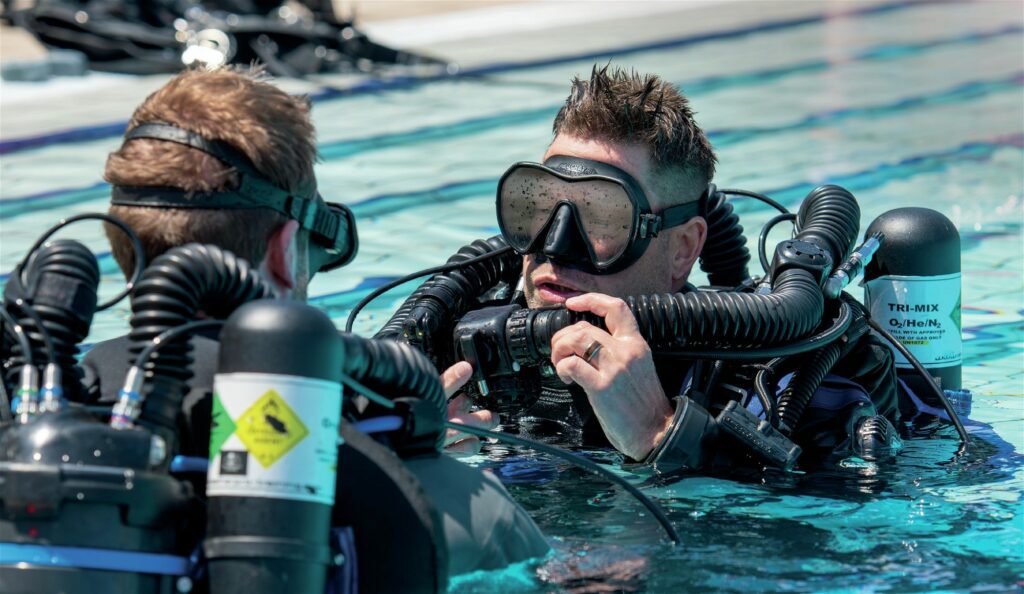
Throughout his jaw-dropping and often laugh-outloud presentation, Harry’s motto ‘N=1’ was hammered home repeatedly – just because it worked once, doesn’t mean it will work again. Those with even a rudimentary understanding of gases will appreciate that mixing two highly explosive gases like oxygen and hydrogen isn’t something to be attempted lightly.
With his signature Kiwi grin, Harris recounted how he’d first attempted to mix the two gases by placing his rebreather into his outdoor swimming pool. Leaving the cylinders to fill, he took his family on a day trip, half expecting to return home to find no roof on his home!
Potential Challenges and Risks of Using Hydrogen
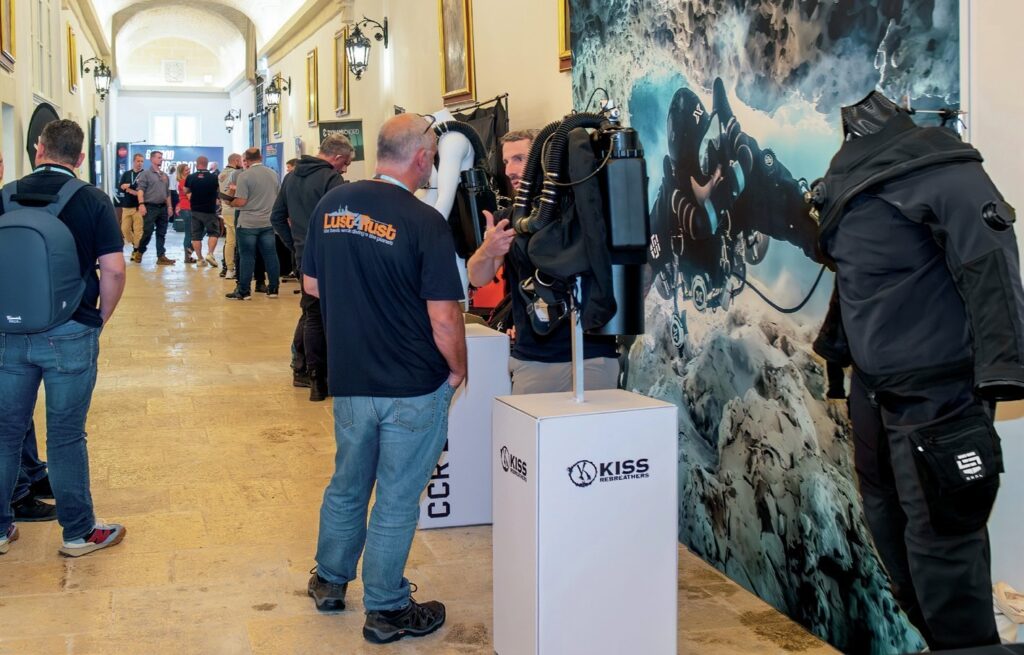
Hydrogen is a very light gas – it has half the density of helium – which makes it an attractive alternative breathing gas for dives below 200m. Lower gas density means lower work of breathing which, in turn, means lower CO2 production and a reduced risk of oxygen toxicity – all things that you certainly want at depth. How Harris’ body would react to the hydrogen was unknown – high pressure nervous syndrome (HPNS), inner ear DCS, decompressing from hydrogen, respiratory stress and bail out complications were all potential risks he could have encountered.
Availability of Online Content from the Forum
Those not fortunate enough to have attended RF4 will be pleased to learn that every presentation will be made freely available to view online. More details to follow!
This article was originally published in Scuba Diver UK #74
Subscribe digitally and read more great stories like this from anywhere in the world in a mobile-friendly format. Link to the article.
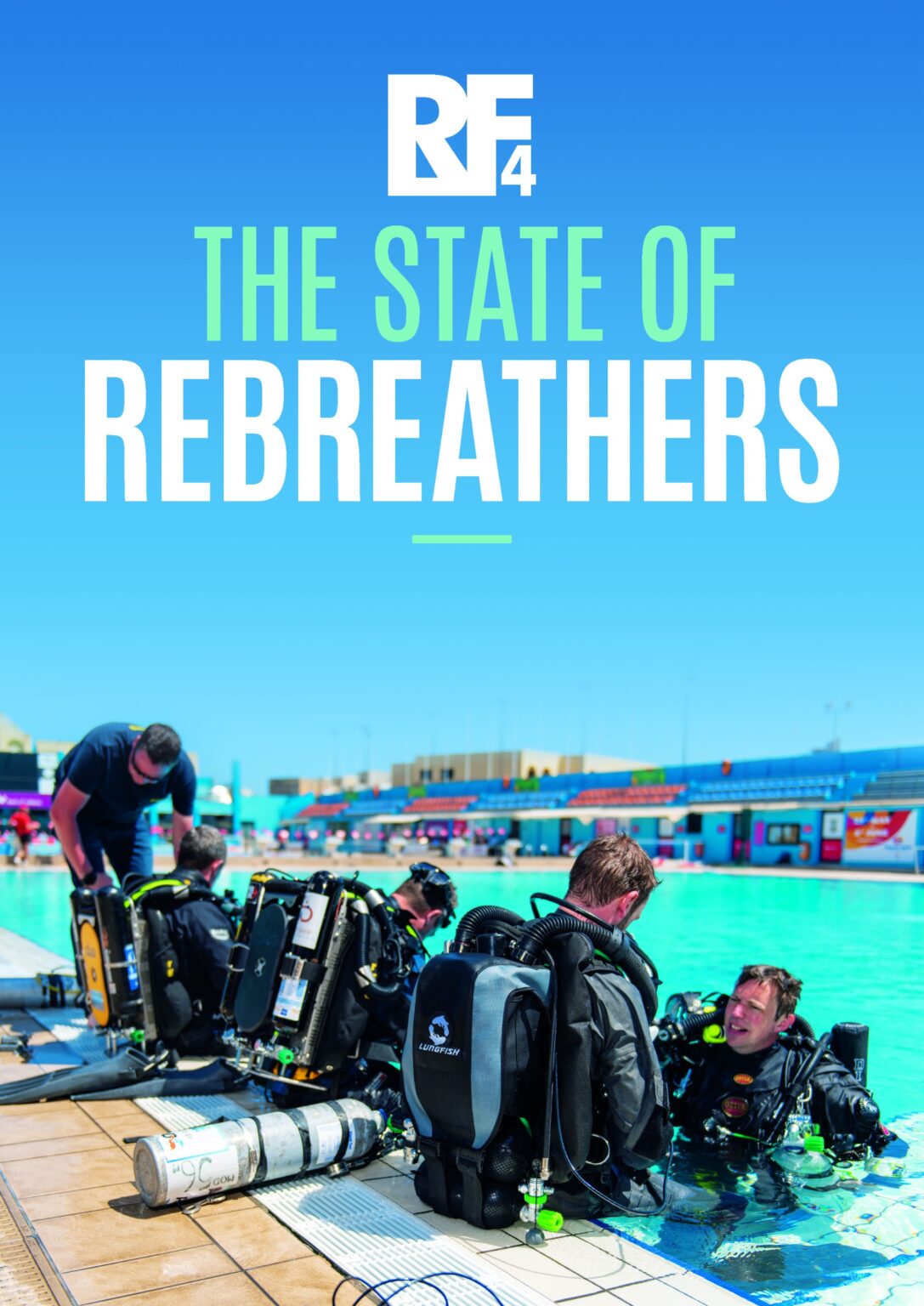



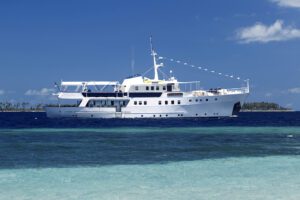
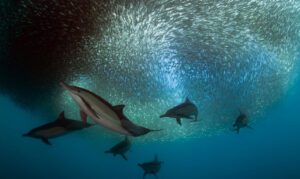
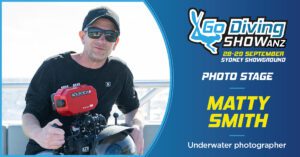
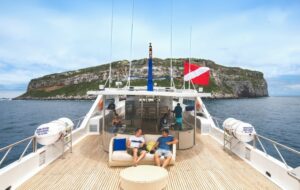

Some one needs to re-edit this article, there are lots of sections that repeat themselves